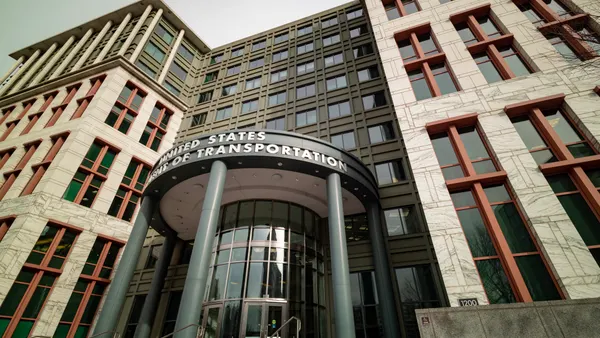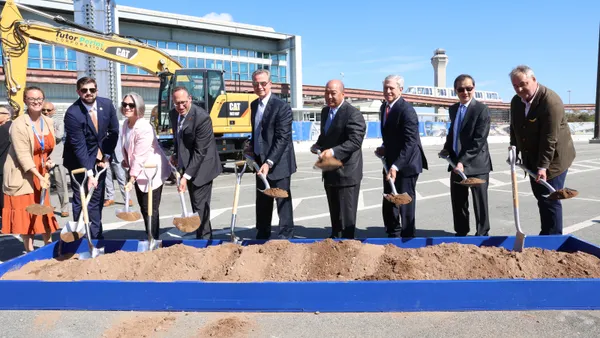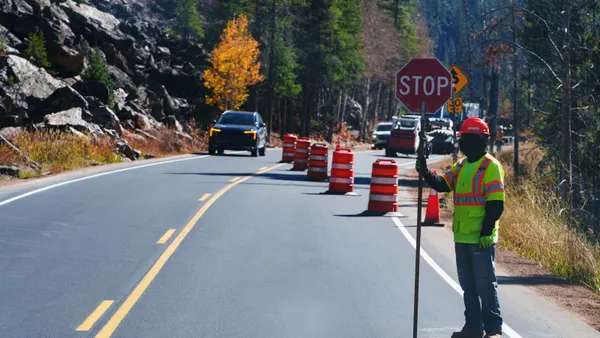Dive Brief:
- The Federal Highway Administration awarded about $500,000 in grants to University of Kansas researchers to study bridge upkeep, repair and improvement, according to a March 3 release.
- The university will use computational simulations and KU’s West Campus Structural Testing Laboratory to examine the causes of constrain-induced fracture, which can lead to span failure but are still not well understood.
- This research comes at a time when infrastructure is top of mind following the passage of the historic Infrastructure Investment and Jobs Act. It's also on the heels of the high-profile January collapse of the Fern Hollow Bridge in Pittsburgh that injured 10 people. Experts warn that more collapses could occur due to America's aging infrastructure.
Dive Insight:
The Federal Highway Administration's newly awarded $500,000 in grant money to the University of Kansas will, researchers hope, help shore up the nation's infrastructure and prevent tragedies that can kill.
The three grant programs are:
- A $258,165, 34-month grant led by Caroline Bennett, a professor of civil, environmental and architectural engineering at the university. It aims to develop better detailing in steel bridges to prevent constraint-induced fractures, which occur when a structure can't adapt or "deform" to stress. This type of fracture can bring down bridges.
- A $112,413, 22-month grant led by Bennett to investigate how to improve university curricula for graduate students studying bridge design across the nation.
- A $130,000, 22-month grant, with the university's portion headed by William Collins, an associate professor of civil, environmental and architectural engineering. The overall grant is headed by Mechanicsburg, Pennsylvania-based bridge engineering firm Modjeski and Masters. This research will assess the effectiveness of ultra-high toughness (UHT) steel in bridge columns and beams to improve structural reliability.
Bridges are "critical to our society," Bennett said in the release, and any bridge failure erodes public confidence in the nation's economy. Bennett hopes that the research projects will help shore up U.S. bridges against failures.
Steel-making capabilities have greatly improved in recent decades, Collins said in the release, but many bridge designs don't make the best use of it. In an interview with Construction Dive, Collins said he hoped the research will help improve public perception of infrastructure spending, especially because defunct spans can paralyze a region's travel and transportation.
"A lot of times the public, in general, when we talk about academic research, they kind of roll their eyes and [say] 'why are we investing in that, let's just fix this bridge, just fix my road, fix this building.'" Collins said. "But understanding the root cause of the problems is super important and can help save a ton of money down the road."














